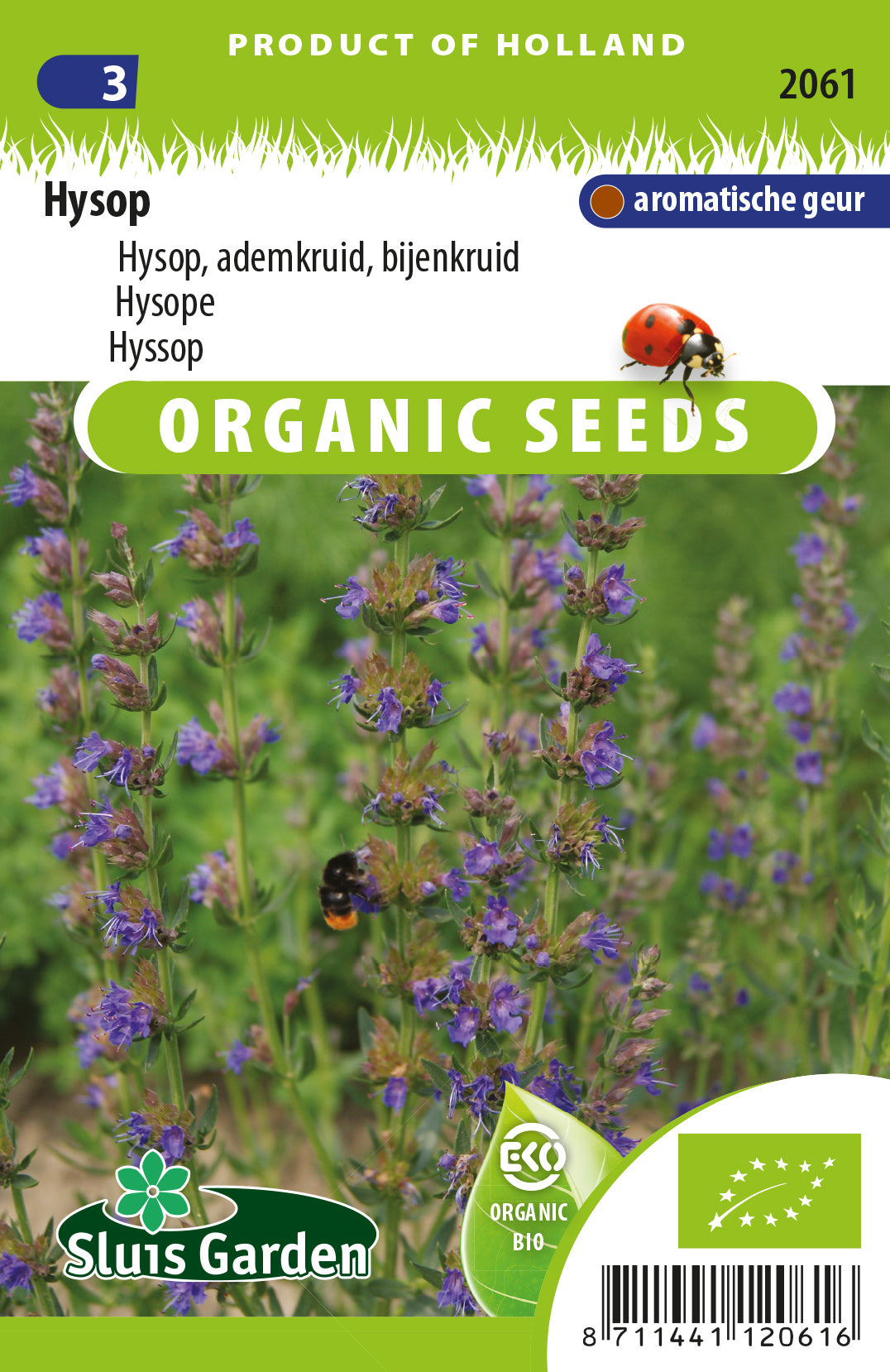1
/
of
1
Hyssop BIO
Hyssop BIO
Regular price
1.350 KWD
Regular price
Sale price
1.350 KWD
Unit price
/
per
Shipping calculated at checkout.
Couldn't load pickup availability
Growing Hyssop (Hyssopus officinalis) BIO organically involves following natural and sustainable practices without the use of synthetic chemicals. Here's a step-by-step guide to help you grow organic Hyssop:
**1. Soil Preparation:**
- Choose well-draining soil enriched with organic matter. Hyssop prefers a slightly alkaline to neutral soil with a pH between 6.0 and 7.0.
**2. Planting:**
- **Timing:** Directly sow Hyssop seeds in the garden in early spring after the last frost. You can also propagate Hyssop from cuttings or purchase young plants.
- **Spacing:** Plant Hyssop about 18 to 24 inches apart in rows spaced at least 24 inches apart.
**3. Sunlight:**
- Hyssop prefers full sunlight. Plant it in a location where it receives 6-8 hours of direct sunlight daily.
**4. Watering:**
- Hyssop is drought-tolerant but benefits from regular watering, especially during dry periods. Allow the soil to dry between watering to prevent overwatering.
**5. Mulching:**
- Apply organic mulch, such as straw or shredded leaves, around the base of Hyssop plants to retain soil moisture and suppress weeds.
**6. Fertilization:**
- Hyssop is not a heavy feeder. You can incorporate well-rotted compost into the soil before planting, and additional fertilization may not be necessary.
**7. Companion Planting:**
- Hyssop is a companion plant for certain vegetables. It may attract beneficial insects and repel certain pests.
**8. Pest Control:**
- Hyssop is generally resistant to pests. Monitor for aphids and spider mites, and use organic solutions like insecticidal soap or neem oil if necessary.
**9. Disease Prevention:**
- Hyssop is resistant to many diseases. Good garden hygiene and proper spacing can help prevent issues.
**10. Harvesting:**
- Harvest Hyssop leaves and flowers when they are in full bloom. Cut stems just above a leaf node using clean, sharp scissors or pruning shears.
**11. Culinary Uses:**
- Use Hyssop leaves and flowers in teas, salads, soups, and stews. It has a slightly bitter and minty flavor.
**12. Pruning:**
- Prune Hyssop plants regularly to encourage bushier growth. Pinch the tips or cut back the stems to promote a fuller appearance.
**13. Container Growing:**
- Hyssop can be grown in containers. Choose a well-draining potting mix, and make sure the container has drainage holes.
**14. Organic Certification:**
- If you wish to officially label your Hyssop as organic, follow the guidelines and requirements set by your local organic certification body.
Growing organic Hyssop BIO involves creating a healthy and sustainable environment for your plants, promoting biodiversity, and avoiding synthetic inputs. Following these practices will contribute to the overall well-being of your garden and the quality of your Hyssop harvest.
**1. Soil Preparation:**
- Choose well-draining soil enriched with organic matter. Hyssop prefers a slightly alkaline to neutral soil with a pH between 6.0 and 7.0.
**2. Planting:**
- **Timing:** Directly sow Hyssop seeds in the garden in early spring after the last frost. You can also propagate Hyssop from cuttings or purchase young plants.
- **Spacing:** Plant Hyssop about 18 to 24 inches apart in rows spaced at least 24 inches apart.
**3. Sunlight:**
- Hyssop prefers full sunlight. Plant it in a location where it receives 6-8 hours of direct sunlight daily.
**4. Watering:**
- Hyssop is drought-tolerant but benefits from regular watering, especially during dry periods. Allow the soil to dry between watering to prevent overwatering.
**5. Mulching:**
- Apply organic mulch, such as straw or shredded leaves, around the base of Hyssop plants to retain soil moisture and suppress weeds.
**6. Fertilization:**
- Hyssop is not a heavy feeder. You can incorporate well-rotted compost into the soil before planting, and additional fertilization may not be necessary.
**7. Companion Planting:**
- Hyssop is a companion plant for certain vegetables. It may attract beneficial insects and repel certain pests.
**8. Pest Control:**
- Hyssop is generally resistant to pests. Monitor for aphids and spider mites, and use organic solutions like insecticidal soap or neem oil if necessary.
**9. Disease Prevention:**
- Hyssop is resistant to many diseases. Good garden hygiene and proper spacing can help prevent issues.
**10. Harvesting:**
- Harvest Hyssop leaves and flowers when they are in full bloom. Cut stems just above a leaf node using clean, sharp scissors or pruning shears.
**11. Culinary Uses:**
- Use Hyssop leaves and flowers in teas, salads, soups, and stews. It has a slightly bitter and minty flavor.
**12. Pruning:**
- Prune Hyssop plants regularly to encourage bushier growth. Pinch the tips or cut back the stems to promote a fuller appearance.
**13. Container Growing:**
- Hyssop can be grown in containers. Choose a well-draining potting mix, and make sure the container has drainage holes.
**14. Organic Certification:**
- If you wish to officially label your Hyssop as organic, follow the guidelines and requirements set by your local organic certification body.
Growing organic Hyssop BIO involves creating a healthy and sustainable environment for your plants, promoting biodiversity, and avoiding synthetic inputs. Following these practices will contribute to the overall well-being of your garden and the quality of your Hyssop harvest.
Share

